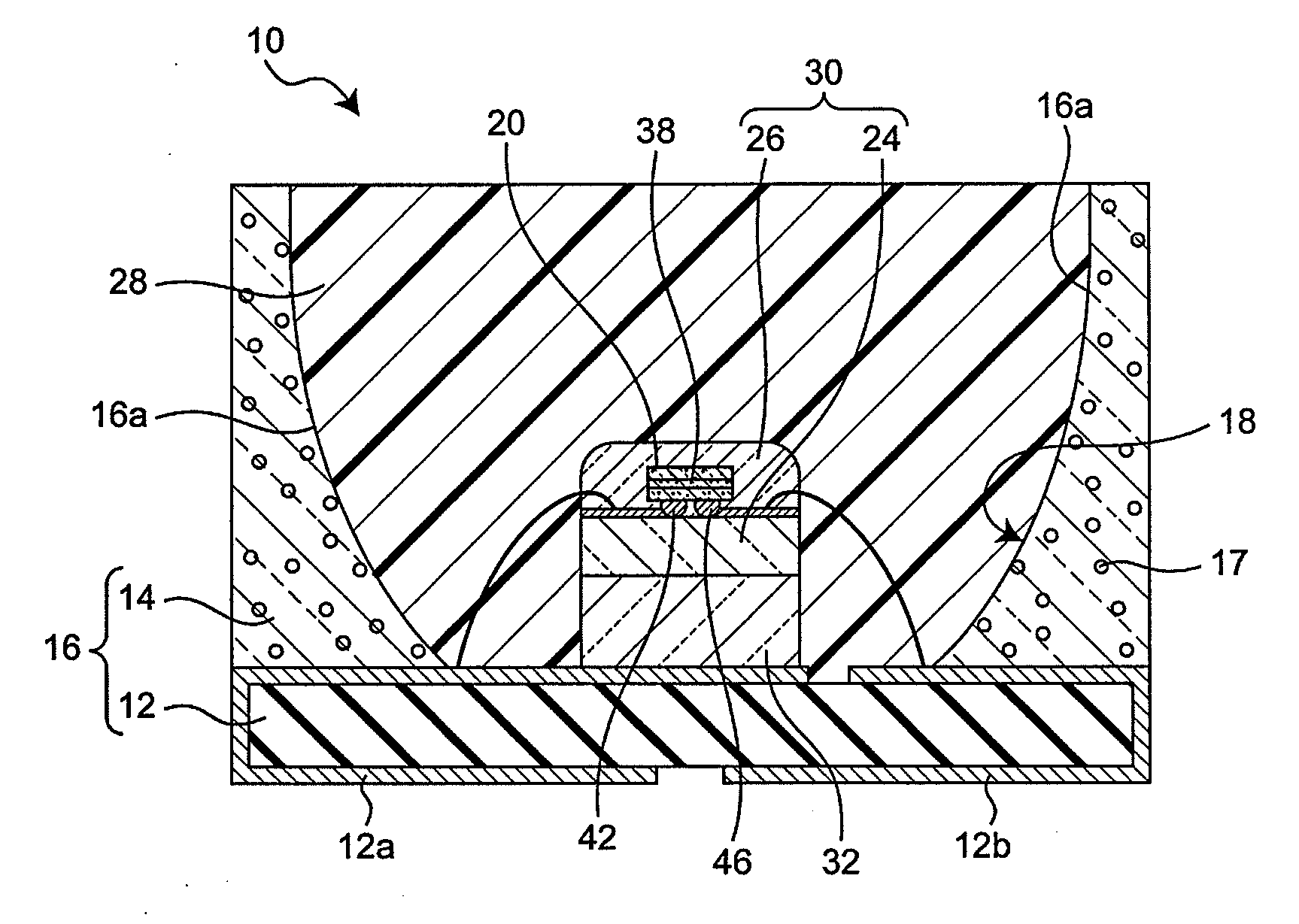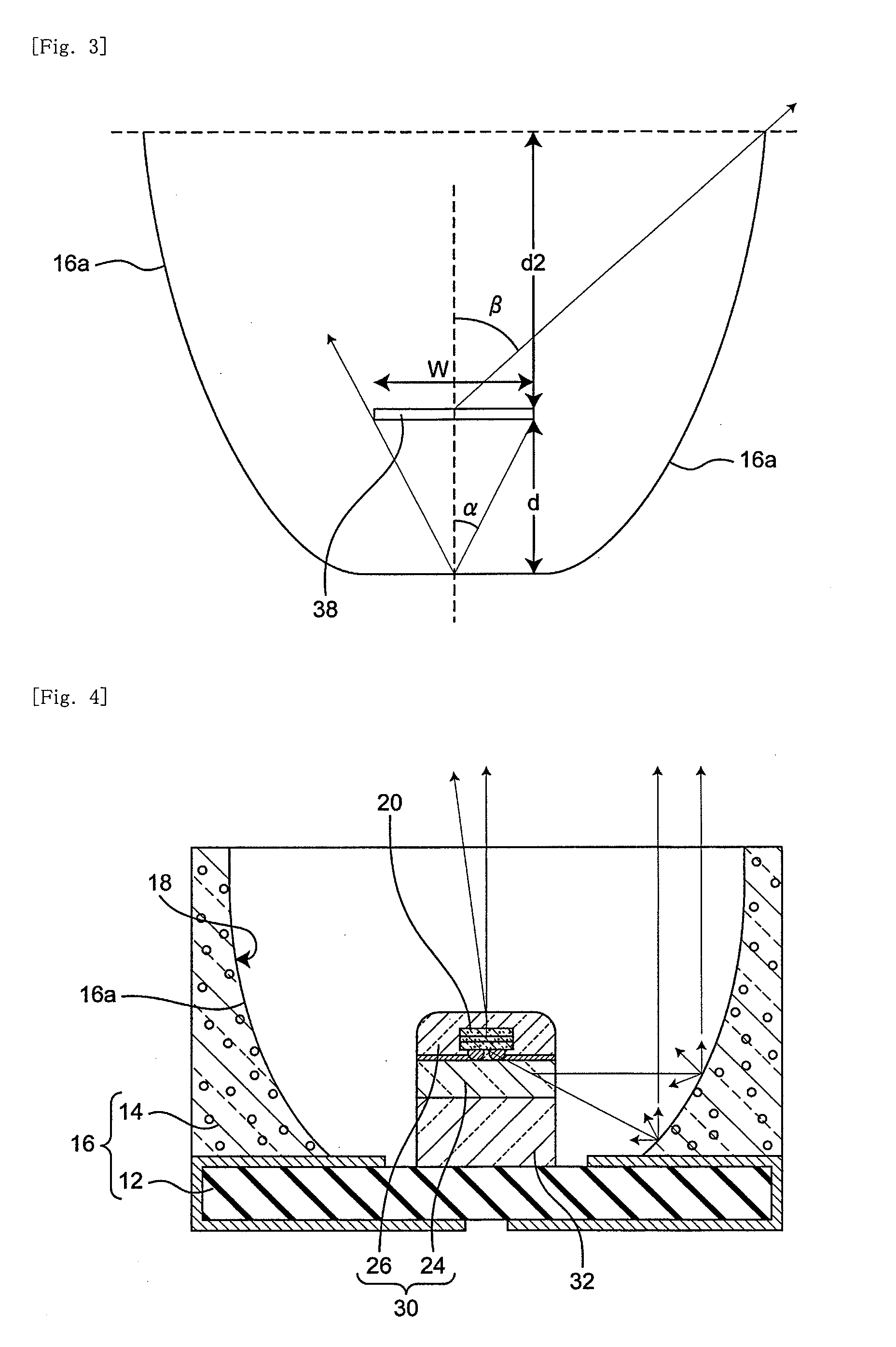Light emitting device
a technology of light emitting device and light source, which is applied in the direction of semiconductor devices, basic electric elements, electrical apparatus, etc., can solve the problems of color unevenness and other problems, and achieve the effects of high light extraction efficiency, reduced color unevenness, and reduced color unevenness
- Summary
- Abstract
- Description
- Claims
- Application Information
AI Technical Summary
Benefits of technology
Problems solved by technology
Method used
Image
Examples
Embodiment Construction
[0021]Preferred embodiments of the present invention will be described below with reference to the accompanying drawings. The drawings show the objects schematically, and information included therein such as layout, dimensions, proportion and shape may be different from the actual. The members using the same reference numeral as that of another embodiment in the respective embodiments denote the same or corresponding members, and description thereof may be omitted.
[0022]In the present specification, the terms “up” and “down” are used also to indicate the side of the light emitting device where emitted light is extracted and the opposite side, respectively. For example, the term “upward” indicates the direction of the light emitting device where emitted light is extracted, and the term “downward” indicates the opposite direction. Also, the term “top surface” indicates the surface one the side of the light emitting device where light is extracted, and “bottom surface” indicates the su...
PUM
 Login to View More
Login to View More Abstract
Description
Claims
Application Information
 Login to View More
Login to View More - R&D
- Intellectual Property
- Life Sciences
- Materials
- Tech Scout
- Unparalleled Data Quality
- Higher Quality Content
- 60% Fewer Hallucinations
Browse by: Latest US Patents, China's latest patents, Technical Efficacy Thesaurus, Application Domain, Technology Topic, Popular Technical Reports.
© 2025 PatSnap. All rights reserved.Legal|Privacy policy|Modern Slavery Act Transparency Statement|Sitemap|About US| Contact US: help@patsnap.com



